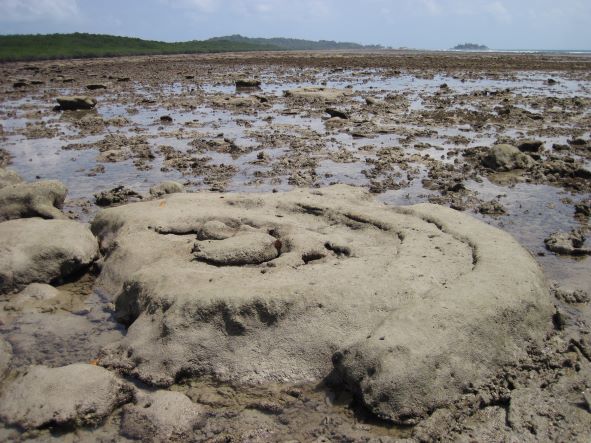Piecuch, C.G., Kemp, A.C., Gebbie, G., and Meltzner, A. J., 2021. Climate did not drive Common Era Maldivian sea-level lowstands. Nature Geoscience, 14, 273–275. https://doi.org/10.1038/s41561-021-00731-2

A fossil microatoll from Indonesia. Photo by Dr. Aron J. Meltzner, Earth Observatory of Singapore
Reconstructions of sea level during Common Era—the past 2,000 years—are informative of relationships between sea level and natural climate variability, and the uniqueness of modern sea-level rise. Researchers recently reconstructed Common Era sea level in the Maldives (Indian Ocean) using corals, and reported periods of 150–500 years when sea level fell and rose at average rates of 2.7–4.3 mm/yr, which they attributed to ocean cooling and warming inferred from reconstructions of sea-surface temperature (SST) and radiative forcing. Based on their results, those authors suggested that the magnitude of present-day sea-level rise is not unique in the context of the Common Era. In our paper, we challenge that interpretation, using principles of sea-level physics to argue that pre-industrial radiative forcing and SST changes were insufficient to cause sea-level changes due to ocean cooling and warming as large as reported for the Maldives. Our results support the paradigm that modern rates and magnitudes of sea-level rise due to climate change are unprecedented during the Common Era.
This research was funded by the National Science Foundation (award OCE-2002485) and published in the journal Nature Geoscience.
